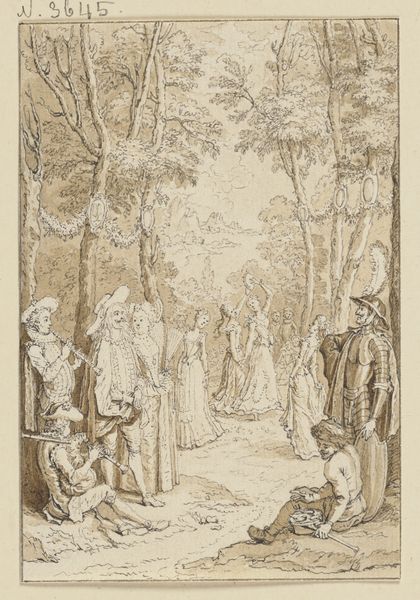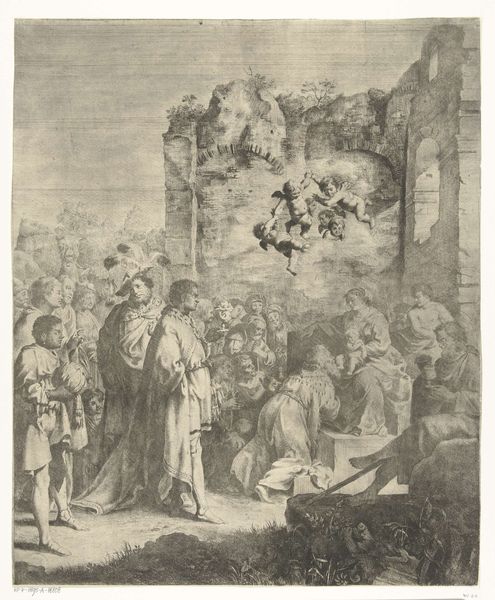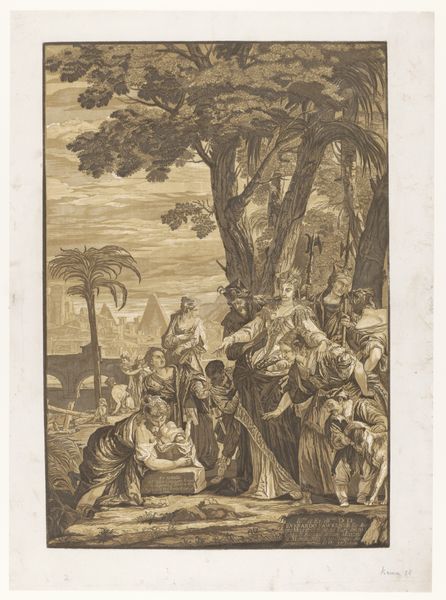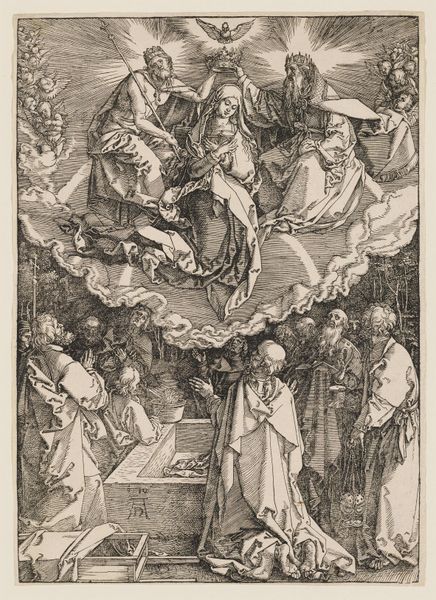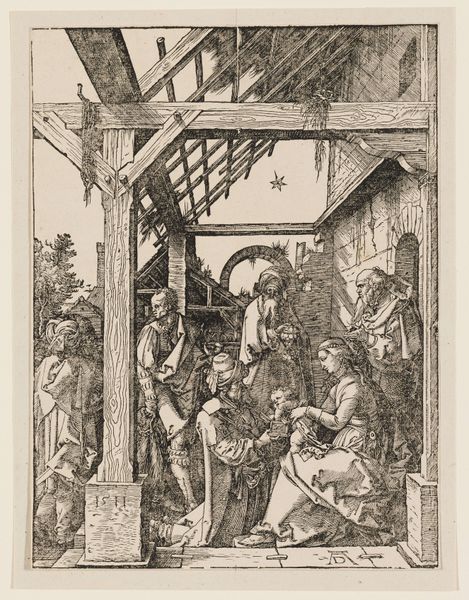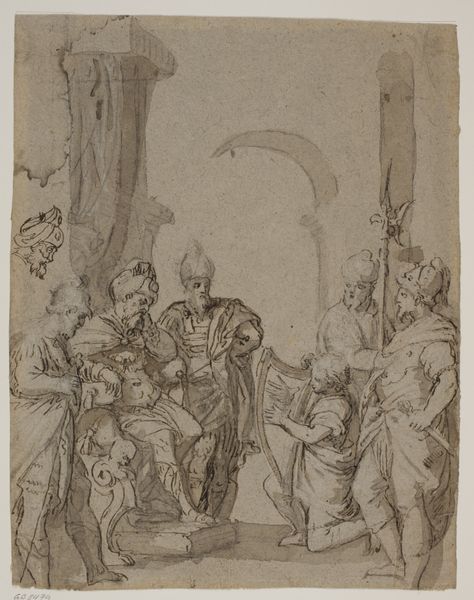
drawing, print, etching, pencil
#
drawing
#
narrative-art
#
ink painting
# print
#
etching
#
charcoal drawing
#
figuration
#
pencil drawing
#
pencil
#
history-painting
Dimensions: 353 mm (height) x 302 mm (width) (bladmaal)
Editor: This is "The Adoration of the Magi" by Jan Gerritsz van Bronchorst, created sometime between 1603 and 1661. It’s a drawing, I think pencil or ink, and it gives the whole scene a soft, almost dreamlike quality. How do you approach a work like this from a formal perspective? Curator: One might begin by examining the linear structure. Notice how Bronchorst uses delicate lines and tonal variations to define form, mass, and spatial depth. The composition itself adheres to a pyramidal structure, directing the eye toward the Virgin and Child. This stable arrangement conveys a sense of order, emphasizing the divine nature of the event. Observe, too, the balance between detailed foreground figures and a more loosely defined architectural backdrop. What effect does that contrast have on you? Editor: I guess it keeps the focus on the figures; you’re drawn to their expressions and the detail in their clothing. Also, there’s something ethereal about the cherubs in the sky and the ruins in the back, so it’s definitely playing with contrasts in tone. Curator: Precisely. Now, consider the medium. The pencil or ink, coupled with etching and print, enables subtle gradations of light and shadow. This sfumato effect softens the edges of forms, producing a sense of atmospheric perspective. It's the modulation of these elements that underscores the work's meaning, transcending a mere illustration of the biblical narrative. Do you notice a pattern in how the lines converge? Editor: I see it more clearly now – the way the lines and shading pull you towards the Virgin and Child creates depth, despite it being a relatively flat image. The structure really is remarkable. Curator: Indeed. Appreciating these formal elements allows us to look at how the artistic method gives power to the historical topic. Editor: Thank you, seeing how all the components are arranged is extremely useful to seeing something new within this well-known scenario.
Comments
No comments
Be the first to comment and join the conversation on the ultimate creative platform.
